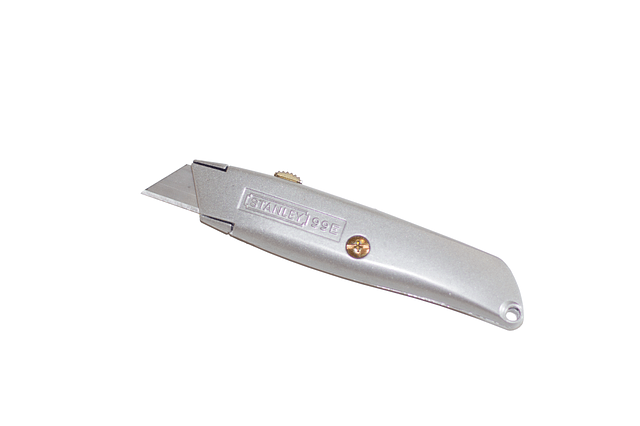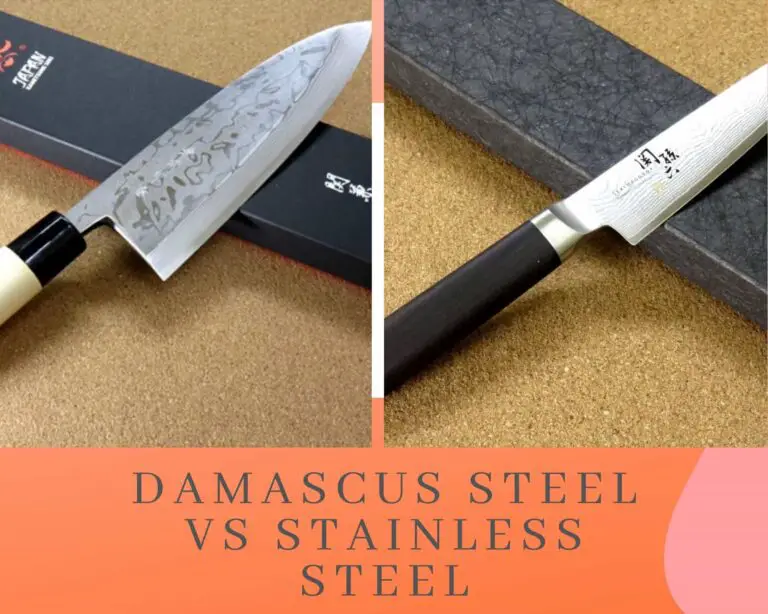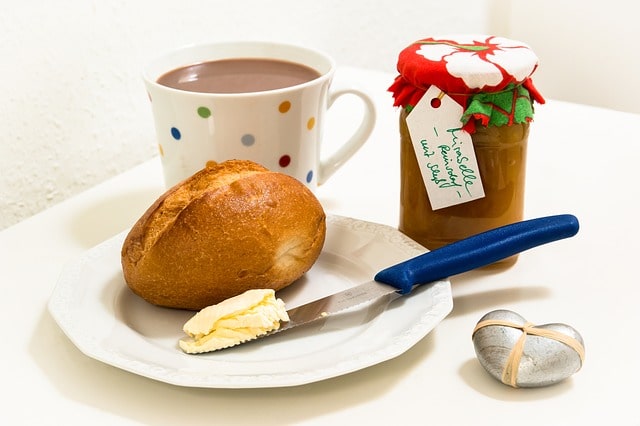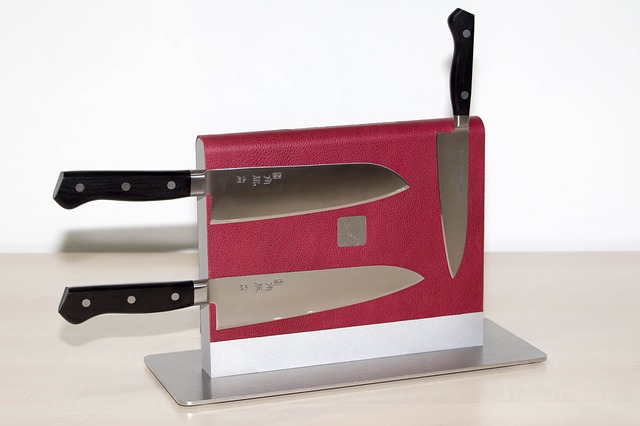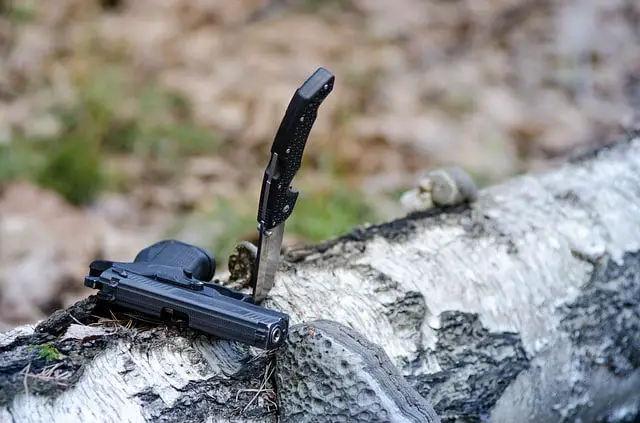There is no two way about this:
Anyone serious about their knives should also know the knife anatomy. You should understand the commonly used names for the different parts of a knife and be able to identify them on the fly.
When this happens, you find that salespeople don’t try to sell you a blade of poor quality anymore. They know that you know what you are looking for.
As a bonus, after examining the different parts of the blade as planned here, I’ll throw in a buying guide to help you choose the best knives every time.
Table of Contents
What are the parts of a fixed knife blade?
Different guides mention that there are 9 parts of the blade, claim 10 sections of a knife or even 11.
I don’t subscribe to any one of those models.
The makeup of your knives are a factor of what kind of knives they are – from fixed blade knives to folding knives and all that.
No matter the kind of knives, though, some parts are constant. Likewise, some are special to some knives.
We discuss them all in this piece.
Knife Anatomy 101: Get Familiar
Here’s what you’ve been waiting for.
Let’s get right to it, then.

Point
The knifepoint is the end part of the blade on the sharp side.
Although it might look like all knives have the same point, that could not be farther from the truth.
Depending on what you need the knives for, you can get fixed blade and foldable knife points such as:
- Clip point – great for thrusting and piercing
- Drop point – preferred for its versatility. Great for cutting meat, skinning, and carving. Good hunting blade.
- Spear point – the name gives it away. Highly preferred for thrusting and making deeper cuts. Also great for hunting.
- Needle point – a great fighting knife, friend in the outdoors, and amazing for piercing too.
If you want to learn more about the various point types on typical kitchen knives and other knives, check out my knife identification chart here for a comprehensive approach.
Tip
The tip is generally confused for the knife point too.
Located at the pointy end of the blade too, the knife tip houses the point and is considered the starting of the knife’s edge.
This delicate, usually very sharp region is used for fine slicing operations of not so stubborn food items. It is also the first part that catches on to a food item/ material when cutting.
Edge
The cutting edge of the knife is that part we all love.
It is the sharpened section that extends from the tip to the heel (or back) of the knife.
There are two main kinds of knife edges:
- Straight edge – the most commonly used kind of knife. It can do everything from cutting, slicing, boning, and chopping to carving
- Serrated edge – also known as a bread knife, they are great for slicing baked items (bread, cake, pastries, etc), some vegetables (such as tomatoes), onions, and more. The serrations could be full or partial.
Heel/ Belly
A typical knife slopes from the tip as it extends and widens into the rear section. The flat, widest part of the knife (located at the very back of the knife edge) is called the heel (or belly, depending on who you’re speaking with).
This part of the knife edge is reserved for delivering deeper cuts to those food items (yes, yam, I’m speaking to you) that want to give you a tougher time.
PS If you find yourself using the heel more than often, your knife might be unsharpened/ dull. Look at this sharpening guide if you have a whetstone, or this one if you don’t have a sharpener with you.
Spine
The knife’s spine is everything opposite of the edge.
For one, it is truly directly opposite of the edge and makes up what is generally called the back of the knife
The spine is also the thickest part of the blade, sloping gently into the V-shaped edge that is so designed for sharpness.
Rivet
Now, before anything else, most people would agree that the rivets are part of the handle, not the blade.
If you have ever pulled a blade from the handle, though, you will see that it comes with holes for the fasteners to fit into. Thus, I think they just as much belong on the blade as the handle itself.
That said, these fasteners are used to secure the handle of the knife to the blade. They could also contribute to the overall general appeal of your knife.
Bolster
A fixed blade does not just extend into the handle. There is that small, thick, unsharpened section at the end of the blade which adds more stability to the entire knife build and grip. That is called a knife bolster.
Since folding knives come with a blade that extends, there is almost no reason to set a bolster on them. That is why this bolster is mostly a mainstay on fixed blades and kitchen knives.
Tang
What’s that ‘thang,’ you ask?
The tang supplies rigidity and stability to the knife’s operation.
It is the part of the blade that extends into the handle and is secured in place by the handle fasteners.
There are two main tang types to consider when buying knives: the full tang and partial tang.

- Partial tang – as the name implies, this guy does not make it to the back of the knife. It gets about halfway through, though, so things are still pretty stable.
- Full tang – now, this is the real ‘thang.’ Unlike the partial tang, this guy makes it to the end of the handle.
No, that’s not a joke. Every knife does have a butt.
Buying Guide: How to buy the best fixed blade knives
Since we started with the blades here, I’ll be focusing mostly on the knife blades and how to make sure you are getting the best value for money on them.
Don’t worry. I’ve spiced up this buying guide with stuff to look out for in other parts of the knife too.
Brand
I feel like I have said this a hundred times before, but I will say it again.
You don’t have to pay through your nose to own the knives of your dreams, but don’t plan on being cheap either.
That comes back to pinch you in the butt (just like the knife).
I prefer to always go with the trusted brands in the game – and they have not failed me ever. Of course, I pay a slightly higher price than what I would have gotten for some nameless/ faceless brands, but I get peace of mind with my purchases too.
Some of the top brands of kitchen knives that you can order from on Amazon today are:
Blade Material
Before we go further, consider the blade material.
Of the different parts of the knife, the blades are the ones that we need the most. That explains why you should not take any chances here.
Some of the different blade materials that I see around include:
- Stainless steel – stainless steel is one of the most widely used blade metals out there. The metal is easy to maintain and doesn’t give in to corrosion quite easily. However, that does not mean that they are resistant to rust and corrosion. Read this piece to keep the rust out/ remove the rust from your stainless steel knives.
- Carbon steel – the reduction (yes, reduction) of carbon to the steel makes it a stronger, tougher, and highly durable metal. They are also easier to sharpen, clean, and maintain – but they are more susceptible to corrosion due to the lack of high chromium content. (Carbon steel knives’ guide here)
- Ceramics – if this choice of material shocks you, you are not alone. Surprisingly, ceramic knives are harder than their metal counterparts but they suffer from being brittle. You also have to take extra care in storing, sharpening, and maintaining them. Left to me, I don’t see the fuss in these knives.
- Titanium – if you won’t be going underwater or diffusing any bombs soon, you don’t need to splurge on a quality titanium metal knife. That said, though, they are as cool as can be and cut through air sometimes.
I’m sure that there are more blade materials, but these are the ones I can personally comment on.
In most cases, you can do no wrong with stainless steel and carbon steel knives.
Point/ Blade Shape
The knife point informs the shape of the blade itself.
Like I mentioned earlier, there are different knife points out there for diverse purposes. Some can be used for singular purposes (such as speying alone) while others can make for a versatile usage (boning, cutting, skinning, etc).
Determine what the knife will be for, check out the various knife points on this guide, and choose accordingly.
Knife Edge

Again, what is the purpose of your knife?
I think these short pointers will help you identify what kind of knife edge will do it best for you:
- Plain edge – also called the flat grind. Best for push cuts. Makes cuts with improved accuracy without a tear. Much, much easier to sharpen than their serrated counterparts.
- Fully serrated edge – best for slicing cuts. Serrations are thinner and deliver more precise cuts. Great for tougher materials.
- Semi-serrated edge – brings the best of both worlds. Two for the price of one. However, you might get the serrations/ plain edge on the wrong side, depending on the job at hand.
Tang
A tang might work under the hood, but it brings a lot of balance to the knife.
Some people simply write off the partial tang and go for the full tang only (I am ‘some people’) but there are some good benefits to the partial tang also.
For example, the partial tang doesn’t have exposed parts which could be easily corroded. Likewise, they don’t suffer from possibly causing the knife handle to fall apart. These partial tangs might not bring the balance of a full tang to the table – but maybe that is why they are preferred by lightweight knife lovers.
Handle
Your knife handle material is also an important consideration.
I have used knives with metal (stainless steel, aluminum, etc), plastic (small paring knife), ceramic and wooden handles. Of all these, I don’t have a personal favorite handle and love them all the same.
Maybe I love the plastic one lesser (doesn’t feel as premium) but they all get the job done. As long as you are going with a great knife brand, your choice of blade handle comes down to personal preferences.
Handle fasteners
There are two main types of handle fasteners:
- Screws and
- Rivets
The screws are mostly high maintenance and would require that you re-fasten them from time to time. The same is not true for the rivets which stand a higher chance of staying put for longer. That is not to mention that they look better on knives anyway.
Left to me, all knives will come with rivets alone.
Looking Sharp
Now, you don’t only know about what parts make up knife blades, but you are a better expert on buying a great set of knives for yourself.
How about that?
If you would like to learn more about your knives, check out some other resources in the beginner guides section. Don’t forget to share if you found the piece helpful.

![Anatomy of a Knife All Parts of a Knife Blade [+ Buying Guide]](https://cutsandcarves.com/wp-content/uploads/2021/05/Anatomy-of-a-Knife-All-Parts-of-a-Knife-Blade-Buying-Guide.jpg)
